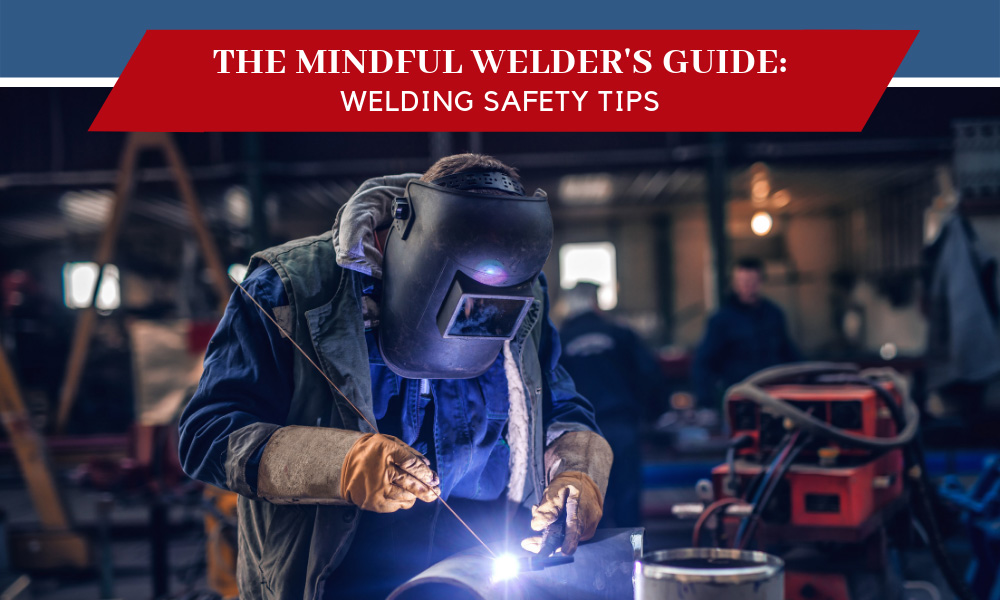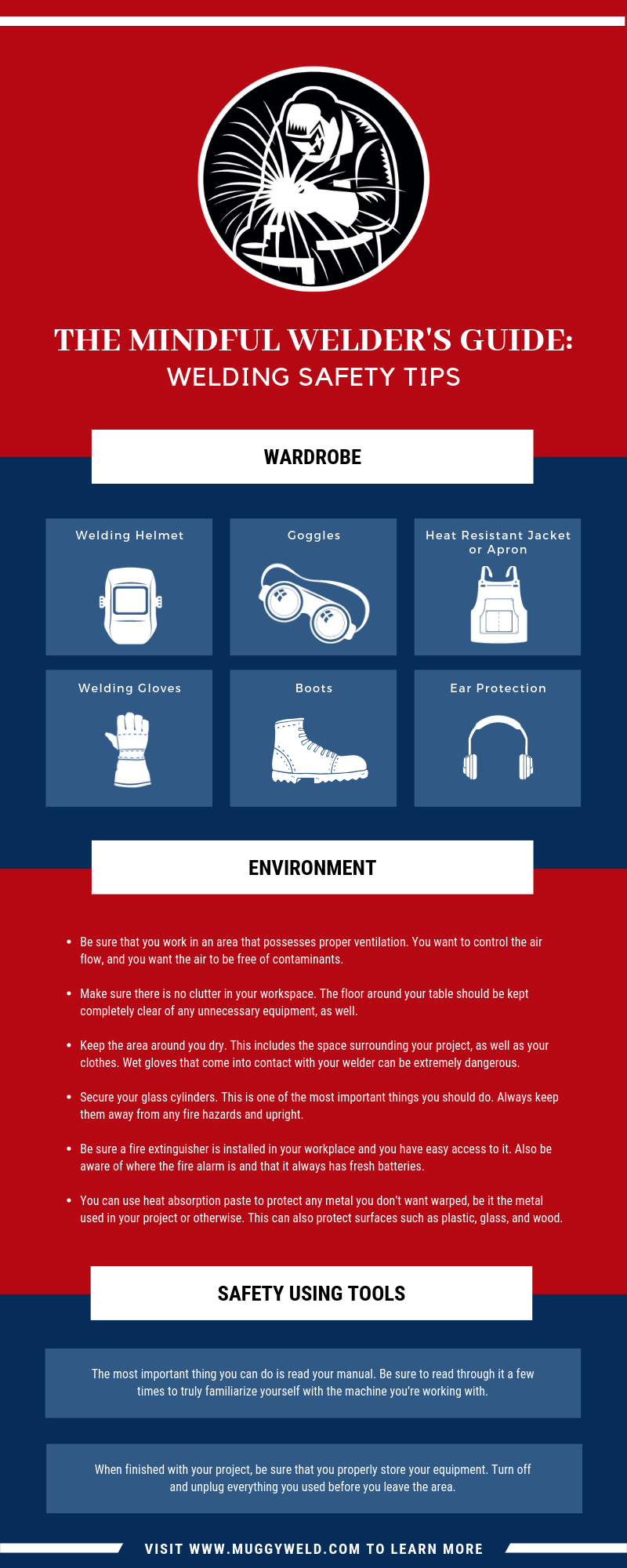One thing that’s just as important as knowing how to weld is also knowing how to follow proper safety protocols. While a rewarding skill to have, welding can be incredibly dangerous if not done right. It’s for this reason that you should thoroughly familiarize yourself with proper safety rules before you begin any actual metalworking. We’ve created a short guide on how you can prepare yourself, as well as your environment, to safely carry out this extraordinary skill.
Part One: Wardrobe
You’ve no doubt heard again and again the importance of properly outfitting yourself for welding—in fact, we’ve touched on it ourselves, and this is something that can’t be repeated too often. For example, you may have heard of arc eye—a condition often caused by exposure to UV radiation. This is dangerous because it can take several hours before someone affected by it realizes an injury has occurred. We strongly encourage you to outfit yourself with each item listed below, and make no exceptions.
A welding helmet: A helmet is worn to protect, as you may guess, your face, neck, and ears. The body of the helmets is often made with aluminum, and the lenses are typically made with tinted glass or plastic. Auto-darkening helmets are a favorite among many, as they prevent the need to continuously flip the helmet up, which can contribute to the risk of repetitive stress injuries.
Goggles: A helmet alone does not serve as enough eye protection. As we mentioned above, eye damage caused by welding is incredibly serious. You want to obtain a quality pair of goggles to properly protect your eyes. Note that safety goggles should always have side shields, as well.
Heat resistant jacket or apron: These are generally made of leather. Aprons are the typical choice of many welders, as they’re longer and provide more ease of movement. When you opt for an apron, however, be sure your arms are protected with something else.
Welding gloves: These are also often made of leather, and they’re outfitted with insulation. Many welders will either purchase longer gloves or attach gauntlets to the ones they have. Gauntlets are our favorite choice, as they allow for more mobility.
Boots: This is, again, a piece of clothing that’s usually crafted from leather. Steel-toed boots are an excellent option, as they help protect your feet from anything that may fall. Keep your boots underneath your pant leg—never have your pants tucked into them.
Ear Protection: A helmet protects your ears from heat, but not necessarily sound. Add additional protection by purchasing earplugs. Some welders will use bulkier gear akin to headphones, but ear plugs are smaller and provide less of a hassle.
Part Two: Environment
Prepping your environment is essential. There are a lot of tools utilized when welding, and they all need to be handled with extreme care. One wrong move can cause serious damage to either you or your product. We’ve made a list of ways you can ensure the safety of your environment.
- Be sure that you work in an area that possesses proper ventilation. You want to control the airflow, and you want the air to be free of contaminants. It’s recommended that any doors and windows in an enclosed space are kept open for the duration of a project. Wall and roof exhaust fans are also highly recommended.
- Make sure there is no clutter in your workspace. The floor around your table should be kept completely clear of any unnecessary equipment, as well. To prevent tripping on cables, secure them in a safe area where you won’t be walking. If the space allows you to, you can consider taping cables to the walls.
- Keep the area around you dry. This includes the space surrounding your project, as well as your clothes. Wet gloves that come into contact with your welder can be extremely dangerous. Cast iron welding, among other methods, cause sparks that will likely contact your gloves at times. If you have any drinks with you when you work—which we recommend to stay hydrated—be sure they’re covered.
- Secure your glass cylinders. This is one of the most important things you should do. Always keep them away from any fire hazards and upright. Whether they’re empty or full, it’s extremely important to do this. We recommend you secure them with a chain or another device with an equal amount of strength.
- Be sure a fire extinguisher is installed in your workplace and you have easy access to it. Also, be aware of where the fire alarm is and that it always has fresh batteries.
- You can use heat absorption paste to protect any metal you don’t want warped, be it the metal used in your project or otherwise. This can also protect surfaces such as plastic, glass, and wood.
Part Three: Safety Using Tools
The last thing that we’ll touch on is how to ensure you safely use your tools. Much of what we discussed above is what’s going to help you achieve this important step. Protective clothing and a safe environment are often instilled in the mind of welders, but using the tools is what you’ll actually do, and so it should be mentioned.
The most important thing you can do is read your manual. We may skip this step when building a bookshelf or operating a TV, but we can’t recommend doing the same when it comes to this kind of machinery. Your manual should be thoroughly looked through, front to back. Be sure to read through it a few times to truly familiarize yourself with the machine you’re working with.
When finished with your project, be sure that you properly store your equipment. Turn off and unplug everything you used before you leave the area. When putting away hoses, wrap them in a way that prevents kinks or wear in the materials. Welding rods should be placed upright, as well.
We’re confident that following our welding safety tips guide will provide you with a safe welding experience. Not worrying about any potential dangers will make sure you can invest your full attention in your project. To help improve your welding experience, look at our product page, and peruse our high-quality products. We wish you the most successful welding experience and hope that our guide helps you to achieve that.


